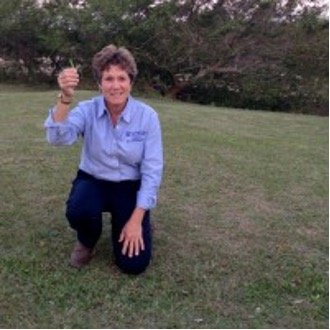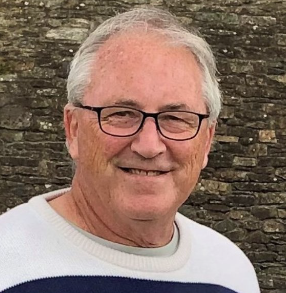
SunGrains Members
-
Steve Harrison, Founding Member
-

Mohamed Mergoum
University of Georgia
701-799-3445
mmergoum@uga.edu
-

Ali Babar
University of Florida
352-273-2213
mababar@ufl.edu
-

Russell Sutton, Founding Member
Texas A&M University
214-718-1602
r-sutton@tamu.edu
-

Rick Boyles, Executive Director
Clemson University
803-300-1104
rboyles@clemson.edu
-

Ehsan Skakiba
University of Arkansas
870-673-2661
eshakiba@uark.edu
-

Noah DeWitt
-

Nonoy Bandillo
North Carolina State University
919-515-8941
nbbandil@ncsu.edu
Emeritus Members
-

Ron Barnett, Founding Member
University of Florida
rdbarnet@ufl.edu
“You never know for sure how a cross will turn out and luck is probably better that skill. Florida 302 resulted from a cross of two half-sib lines. SunGrains is an excellent example of interregional cooperation that has contributed greatly to Southern Agriculture.”
-
Paul Murphy, Founding Member
NC State University
paul_murphy@ncsu.edu
“I have impersonated an academic for forty years, and the hardest thing I ever did was release good small grain varieties. The rest was easy. My Godmother’s standard reaction to notable achievements of young members of the community was her favorite: ‘Ah, sure the apple never falls far from the tree’. I am afraid that I spent my career confirming my Godmother’s observations about heritability, and that she would have been a far better cultivar developer than me.”
-

Jerry Johnson, Founding Member
University of Georgia
jjohnso@uga.edu
Searching for the SUPER WHEAT!!! Oh, the Good Old Days, wheat breeding has definitely changed since the late 1970’s. Back then, headrows were planted by hand and yield plots were harvested with sickles or Jari-mowers. A breeder and one technician would have around 20,000 headrows. Later, Hege breeding equipment significantly improved the chances of developing the Super Wheat. A Hege, 90 head row planter, a seven-row cone plot planter, and a 25C self-propelled combine with trays that needed a crew of four to operate revolutionized wheat breeding. Wheat programs could plant 40-50,000 headrows and have 3-5,000 yield plots at multiple-locations. GAME ON for cultivar development. However, The Good Days are here now. Most programs have GPS planters for headrows and yield plots, harvested with a combine with a weighing system, air-conditioned cab and only one to two operators. With MAS, Genomic Selection, and double-haploids, breeding progress comes sooner than later. However, with all the advancement in equipment and technology, a breeder with an understanding of superior parental combinations, a keen eye, knowledgeable about environments and a good work ethic is still needed to develop the Super Wheat!!!
-

Ann R. Soffes Blount, Founding Member
University of Florida
paspalum@ufl.edu
-

Esten Mason
Colorado State University
Esten.Mason@colostate.edu
“You won’t win acres playing pocket two’s when the competition is holding ace king suited.”
“Year one your favorite line looks like a shiny new penny, the next year it’s covered in bacteria, and the next a tornado goes right over you plots.”
-

Ben Edge, Founding Member
Clemson University
November 25, 1956 - April 22, 2023
-

Robert Bacon, Founding Member
University of Arkansas
rbacon@uark.edu
-

Amir Ibrahim
Texas A&M
aibrahim@tamu.edu
SunGrains Collaborators
-

Gina Brown-Guedira
USDA Research Geneticist; Eastern Regional Small Grains Genotyping Laboratory, Raleigh, NC
-

Christina Cowger
USDA Research Plant Pathologist, Raleigh, NC
-

Dave Marshall
USDA-ARS, Raleigh, NC (Retired)
dsrm1257@gmail.com
“The SunGrains motto on their coat of arms should be Amicus Consilium et Magnus Frumentum.”
-

Jeanette Lyerly
NC State University; Bioinformatics and Data Curation
jeanette_lyerly@ncsu.edu
“My collaboration with SunGrains began in 2016 when I was invited to ditch the comforts of knowing what I was doing running a molecular marker lab and learn data science with R. I coordinate the SunGrains genomic selection project and specialize in sending results out on Friday afternoons for everyone’s weekend reading enjoyment. I love talking with people about R, data management, and the virtues of using only letters and numbers in genotype names.”
-

Dave Van Sanford
University of Kentucky
dvs@uky.edu
“My happy places. Planting pass after pass of wheat on a golden October day under a blue sky, knowing (kidding myself) that I have just planted another world-beater. Early June evening amidst impossibly long shadows, just having finished harvest at a big location. Hanging out with SunGrains, looking at plots, brainstorming the ins and outs of genomic selection and plant breeding in general.”
-

David Buntin
University of Georgia
gbuntin@uga.edu
-

Carl Griffey
Virginia Tech (Retired)
cgriffey@vt.edu
-

Sue Cambron
USDA-ARS, West Lafayette, IN
sue.cambron@usda.gov
“I can't believe it's been 40 years. I have enjoyed working with you. Wishing y'all a healthy, happy future.”
-

VIJAY TIWARI
University of Maryland
vktiwari@umd.edu
-

Nicholas Santantonio
Virginia Tech
nsant@vt.edu


